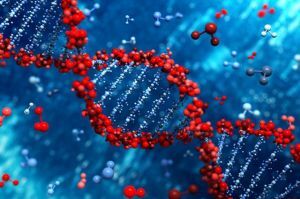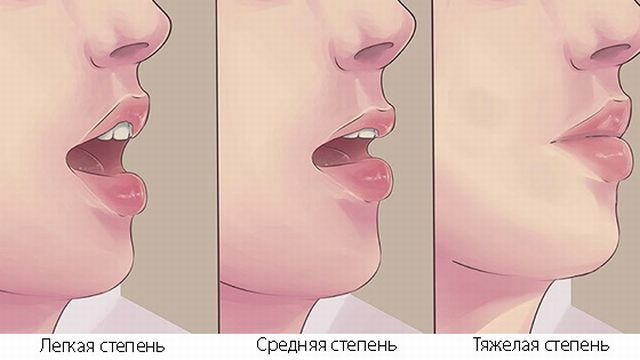 Strympel disease, also called family spastic paraplegia, is chronic degenerative hereditary myelopathy, in which lateral and anterior spinal columns are affected.
Strympel disease, also called family spastic paraplegia, is chronic degenerative hereditary myelopathy, in which lateral and anterior spinal columns are affected.
The disease is chronic, heterogeneous, has different inheritance mechanisms. Inheritance can be autosomal dominant, autosomal recessive, and X-linked type.
Disease in the dominant form develops in childhood, in a recessive form - later. Most often the disease manifests itself at the age of 10 to 30 years. The main symptom of the disease is paralysis of the lower extremities.
Contents
- History of discovery of diagnosis
- What provokes the development of the disease
- Modern classification
- Clinical picture
- Diagnostic criteria
- What does medicine offer?
- Consequences and Forecast
The history of the discovery of the diagnosis
For the first time the disease was described by the German neurologist Adolf Zeligmuhler in 1876.However, Adolf Strumpel studied it in more detail and described it in 1883, which noted the hereditary nature of the disease.
In 1888 the study was continued by the French neuropathologist Maurice Lauren. In honor of the researchers, the disease was called Stryumpel-Lauren disease, in modern practice the name "Strumpel disease" is often used.

What provokes the development of the disease
The disease is a genetic inherited. Inheritance can occur in several types:
- autosomal dominant - if one parent is a gene carrier, then there is a 50% -100% chance of developing the disease in children;
- autosomal recessive - if both parents carry a mutated gene, then there is a 25% -50% chance of developing the disease in children;
- X-linked type - women are carriers of the gene, and only men become ill.
In 2012, scientists at Cambridge University and the University of Miami discovered a gene that causes Stryumpel's disease. The disease occurs due to a mutation in the 19 chromosome in the reticulone gene 2. Three mutations in the reticulone 2 gene have been identified, which lead to the onset of the disease.
Researchers suggest that the disease can be caused by defects in 17 chromosome sites in the case of a dominant type of inheritance, in 29 sites with recessive inheritance, and in 4 sites with X-linked inheritance.
Modern classification of
There are several classifications of Strumpel disease that take into account several aspects.
The inheritance mechanism is divided into the following types: 
- is an autosomal dominant type;
- is an autosomal recessive type;
- X-linked type.
Depending on the clinical manifestations and specificity of the flow, the following forms are distinguished:
- uncomplicated form of - spastic lower paraparesis present, without other disorders;
- complicated form of - in addition to lower paraparesis, there are atrophy of the optic nerves, dysarthria, retinopathy, cerebellar ataxia, epilepsy, mental retardation, hearing disorders, heart defects, deformities of the feet).
On the basis of heredity, Strumpel's disease is divided into:
- familial - the disease is transmitted from the older generation to the younger;
- idiopathic - the family history of the disease is undocumented.
Depending on the age at which the disease began, two types are distinguished:
- type 1 - the disease develops at the age of up to 35 years, spasticity of the lower extremities is observed more often than weakness, walking is less difficult;
- type 2 - the disease occurs at the age after 35 years, muscle weakness, urinary tract disorders, muscle weakness are more common, the development of the disease proceeds faster than in the first type.
The disease is also classified according to the genetic defect. Types are designated as the international abbreviation of the gene for family spastic paraplegia( SPG), followed by numbers from 1 to 76( the numbers denote the loci in which the mutation occurred).At the moment it is considered that the type of SPG 4 is the most common( more than a third of cases of the disease).
Clinical picture of
Symptoms of Strympel's disease appear gradually and do not develop quickly. At the beginning of the development of the disease in childhood, the main symptoms are difficulties in teaching walking, the formation of this skill, walking on tiptoe.

Paraplegic is a classic type of person with Strumpel disease
When the disease develops at an older age, the manifestations begin with difficulties in walking, fatigue of the legs, seizures, problems with bending the legs in the knees and hip joint, frequent falls.
Then the symptoms become more intense, movement becomes more difficult, it is difficult for patients to move their feet.
Muscular weakness of the lower limbs arises after a long time after the onset of the disease. In recessive forms of the disease, the period of reduction in muscle strength is several years, and with dominant forms this period occurs much later than with recessive forms.
Muscle tone is increased from the very beginning of the disease, the muscles can not relax until the end and are always tense.
Spastica is seen in the deep part of the triceps muscles of the lower leg( soleus muscle), which leads to the posterior femoral muscles.
Spasticity may be asymmetrical, and be present only in one limb, however, the examination reveals an increase in tone on both sides, hyperreflexia of both lower extremities is observed.
Hyperreflexia is accompanied by extensor and flexor pathological stop reflexes( arising from the defeat of the pyramidal system, which provides muscle movement).
In the late stages of the disease, there are atrophic changes in the muscles of the legs, caused by a partial or complete decrease in activity, in view of the paresis.
In diseases such as SPG 10 and SPG 17, the muscles of the upper limbs are atrophied. In the extreme stages of the disease there is a possibility of a spastic paresis of the upper extremities, violations of the pelvic organs, involuntary leakage of urine.
In case of SPG 19, incontinence is observed with the onset of the disease, but in other forms it is more common for elderly patients.
In case of complicated forms of the Strympel's disease paraplegic has neurological symptoms:
- cognitive impairment( decreased intellectual abilities, oligophrenia, dementia);
- epilepsy;
- dysarthria;
- retinopathy;
- Optical Neuropathy;
- extrapyramidal syndromes;
- hearing impairment;
- pseudobulbar syndrome.
Diagnostic criteria
The first stage of the diagnosis consists in studying the anamnesis( whether there were similar family complaints in the family history), a patient's questioning about the prescription of  symptoms( increased muscle tone, weakness in the lower extremities, stiffness in the legs, speech difficulties).
symptoms( increased muscle tone, weakness in the lower extremities, stiffness in the legs, speech difficulties).
The neurologist should evaluate the strength in the muscles of the upper and lower extremities, the muscle tone, determine the presence of pathological reflexes. With parplegia of the Stupumpel muscle tone decreases with repeated movements.
Spinal cord studies( computed tomography and magnetic resonance imaging) can detect abnormalities in the pyramidal system, by layer-by-layer examination of the spinal cord. However, the probability of detecting changes in the spinal cord is not great.
Research using electroneuromyography helps to identify neuropathy and its degree of development. Using the study of sensory evoked potentials, it is possible to detect a delay in carrying out pulses along the posterior columns of the spinal cord.
The study of cortical evoked potentials helps detect a low rate of impulse transmission along the path from the cortex to the spinal cord.
For complex forms of the disease, differential diagnosis is performed. The neurologist should exclude such diseases as amyotrophic lateral sclerosis, spinal multiple sclerosis, spinal cord tumor, neurosyphilis, vascular myelopathy. Magnetic resonance imaging helps differentiate Stryumpel's paraplegia from leukodystrophy.
What does medicine offer?
At the moment there are no treatment methods that can prevent, slow, or stop the development of Stryumpel's disease. The existing methods of therapy are aimed at alleviating the intensity of symptoms, improving the physical and psychoemotional state.
 Patients are prescribed the intake of muscle relaxants( Midokalma, Skutamyl, Baclofen), tranquilizers( Seduxen, Tazepam), B vitamins.
Patients are prescribed the intake of muscle relaxants( Midokalma, Skutamyl, Baclofen), tranquilizers( Seduxen, Tazepam), B vitamins.
Treatment begins with the lowest dosage of drugs, and then gradually the dosage is increased. After reducing the spasticity, the dosage ceases to increase.
In case of side effects, the dose increase is stopped, and if necessary, gradually reduced. If it is impossible or ineffective to take tablets, prescribe injections, including endolyumbalno.
In severe cases of spasm, a constant intrathecal infusion of Baclofen( introduction to cerebrospinal fluid) is prescribed. Botulinum toxin is also injected into the calf and hind muscles of the hips.
In addition to medical treatment, it is recommended to use physical therapy, physiotherapy. From physiotherapeutic methods, therapeutic baths, massage, paraffin treatment are prescribed. Patients should be observed at the orthopedist.
If necessary, wear orthoses and surgical treatment of passive restrictions in the joint.
Consequences and prognosis
Strympel disease does not pose a threat to life, but it reduces the quality of life and the patient's ability to work. Hereditary spastic  paraplegia can progress and have a different degree of symptom severity. The prognosis of the development of the disease is individual in each case.
paraplegia can progress and have a different degree of symptom severity. The prognosis of the development of the disease is individual in each case.
The most severe disease occurs at an early age. During puberty, the condition of patients with uncomplicated forms can become stable.
In most cases, patients are able to walk on their own, however, a complete loss of the ability to move is also possible.
Often, patients have a normal life expectancy.



